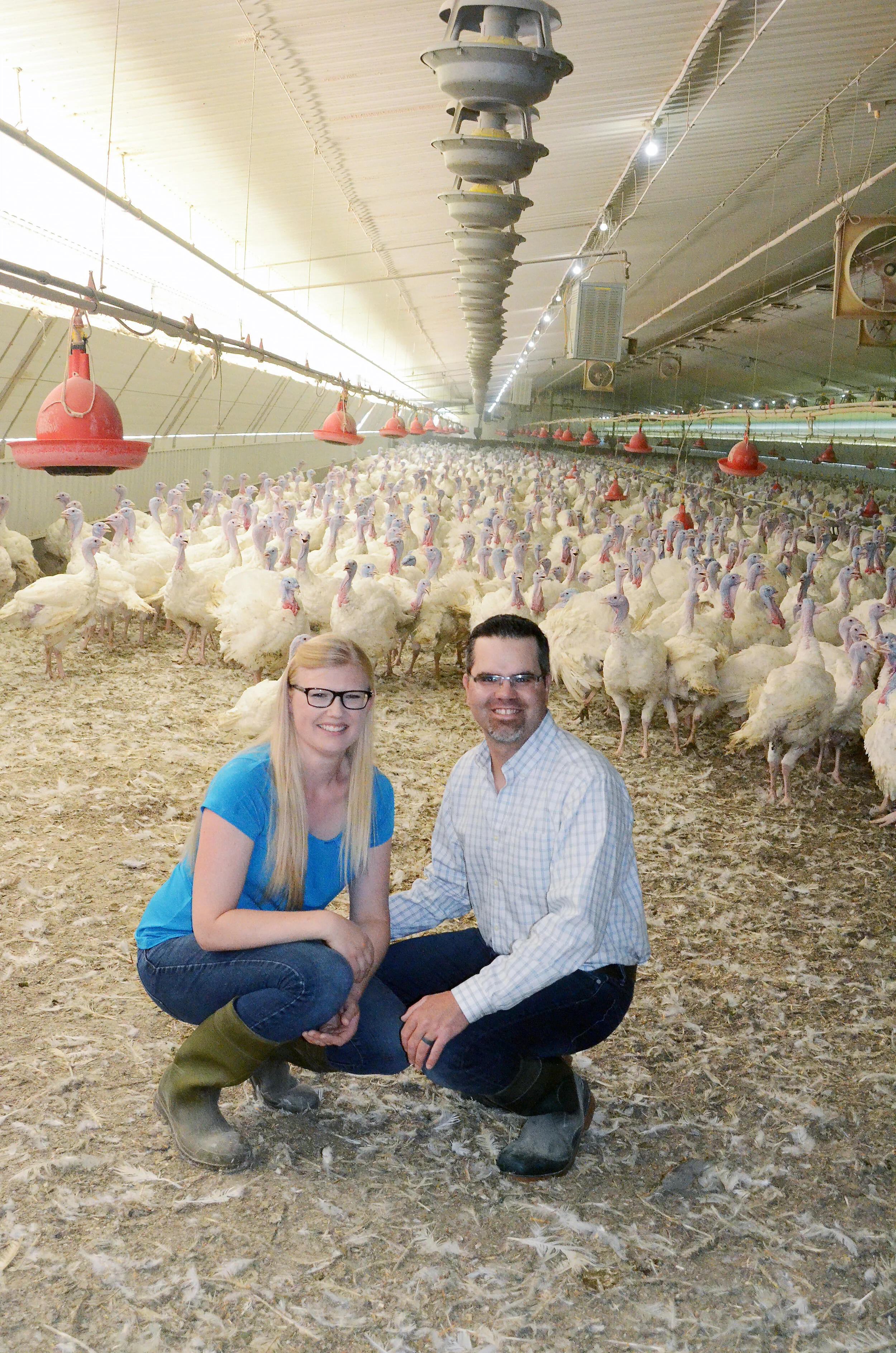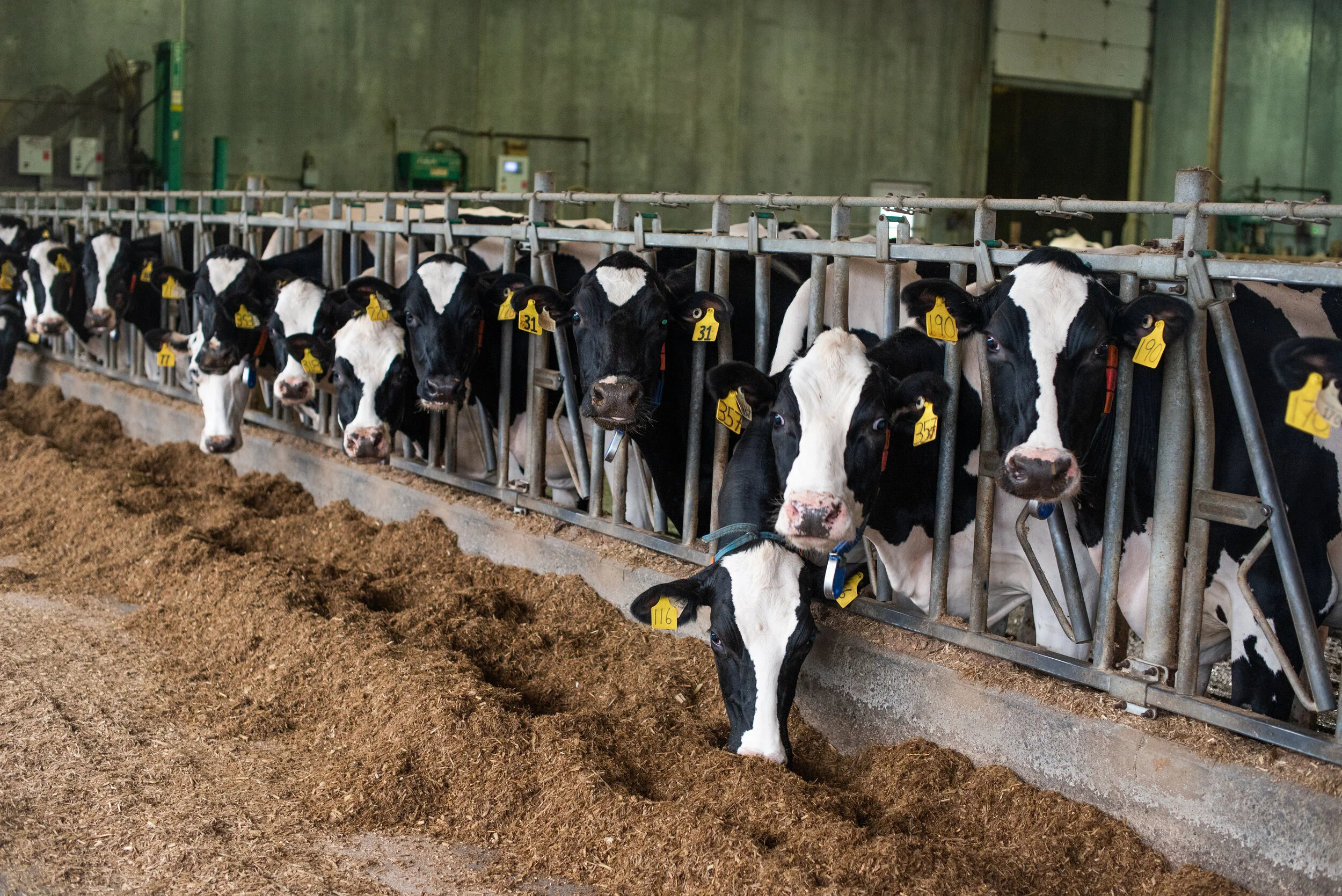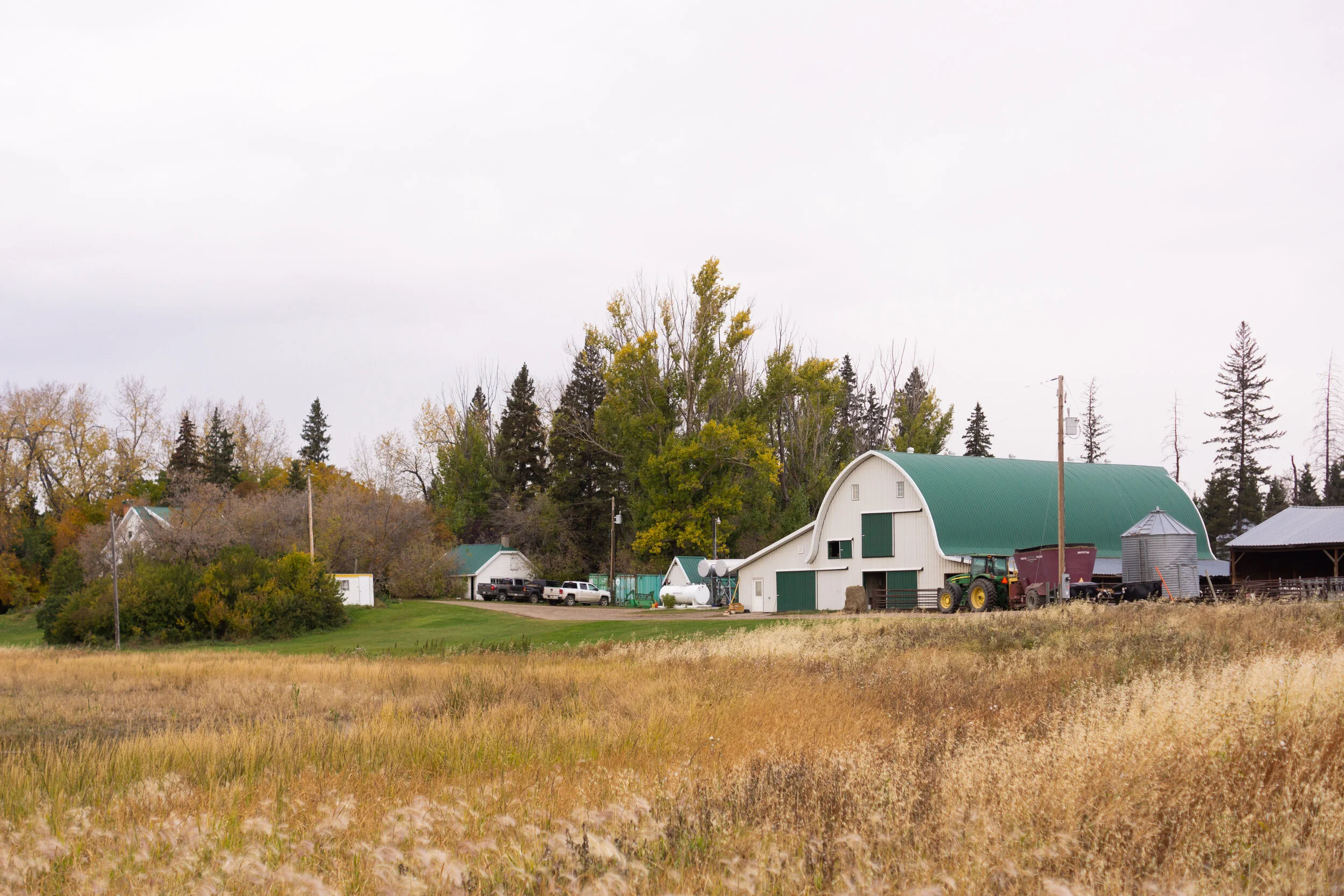Keeping it Local: How Alberta’s Family Farmers Feed the Province
At the Therrien family farm, the day begins the way it does for many Albertan families: with everyone sitting down to breakfast. Then Hinke Therrien gets her daughters – aged 7, 6 and 3 – ready for school and daycare, while her husband, Marc, starts the morning checks in the farm’s eight turkey and poultry barns.
“I like to say that I have my three babes and Marc has his eight babes,” jokes Hinke. “The barns take a lot of work. It really is a lifestyle. Everything revolves around the farm.”
From their property in Sturgeon County, south of Redwater, the Therriens produce around 120,000 turkeys and 150,000 chickens each year. Most of their products wind up in the Alberta market and on local families’ dinner tables.
And like all of the province’s family farmers, the Therriens work hard to care for their animals, and to ensure the safety and quality of their products. They constantly clean and monitor the barns, checking the birds’ levels of feed, water and light. They collaborate with a nutritionist to ensure the birds are getting exactly the right mix of nutrients and probiotics. They even stock their barns with extra hay bales and pieces of string for the birds to play with, peck and scratch, to keep them comfortable, content and entertained.
“I think farming is both more science-based and more heartfelt that people realize,” she says. “We care a lot more about our animals than people think.”
The Therriens both grew up with farming in their blood. Hinke was raised on a dairy farm, first in the Netherlands and later in Ponoka, while Marc grew up in the city, but spent a lot of time on family members’ farms. They met in a dairy production class at University of Alberta’s animal science program.
Is it challenging to work so closely with family? It can be, says Hinke. But the arrangement also has its perks. “Lot of times, [Marc] can just say, ‘go do this,’ And I don’t need same instruction as another employee,” she says. “The flip side is, if there’s a day where you’re not liking one another, well, you still have to work with that person. But it’s kind of nice that my work husband is also my life husband,” she adds, laughing.
Fifth-generation farmer Jason Crozier, of Chelsen Dairies, can’t imagine doing life any other way, either. The Crozier family built its original homestead in the 1890s. Today, Jason and his brother Brett tend to the farm’s 400 cows, and grow feed on some 1,500 acres of land. The farm, north of Edmonton, produces around 12,000 litres of milk a day, most of it supplied directly to the Edmonton market.
“I love being outdoors – I think it was a great upbringing,” says Crozier. He and his brother have six kids between them, who continue the tradition by helping out at the farm.
The brothers share most of the farm’s labour equally. “We try to give each other space and we respect each other,” he says. We each have own tasks and things we’re good at. I get more into the financial aspect of things, like the books, and he tends to spend more time working with animals and cropping.”
When it comes to animal care, they’re definitely on the same page. That is: healthy and happy cows produce more and better milk, which benefits the business and the end consumer. Like all Canadian farmers, they follow a strict set of guidelines for animal care. They work with a nutritionist, and a veterinarian tends to the herd every two weeks (or sooner if needed).
“Everything comes back to the health of the animal, says Crozier. “If the cows aren’t doing well and they aren’t healthy, then we don’t make money.”
Antibiotics are strictly regulated, too: a cow only receives them if she’s sick, and there is a mandatory withdrawal period before her milk can be harvested again. “There is zero tolerance for having antibiotics in milk,” say Crozier. The milk is tested at every pickup, and if anything is detected, the entire load is discarded and the farm gets fined. “It’s something we take very seriously,” he adds.
Why should Albertans look locally to buy dairy and other agricultural produce? To support local business and communities that employ local people, says Crozier. “The amount of business spin-off we produce from our farm is significant,” he says. “I’m stimulating the economy with my business.” And, of course, to support local families who have made farming their life and livelihood. “I love that we’re teaching our girls some work ethic,” says Hinke. “We have a lot of pride that we produce food for people to eat.”
This content was produced by Content Works, Postmedia’s custom content studio. The views expressed in this document are those of Taste Alberta and do not necessarily reflect the provincial and federal governments.
Credits:
Written by: Elisa Valade
Feb 25, 2020




